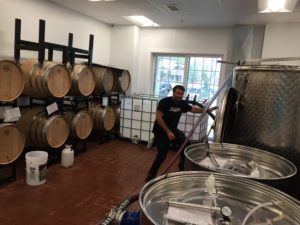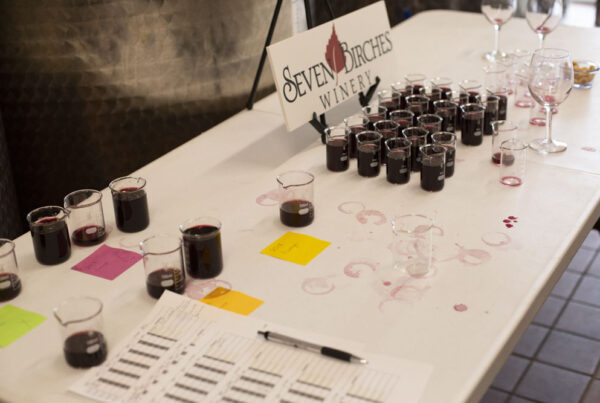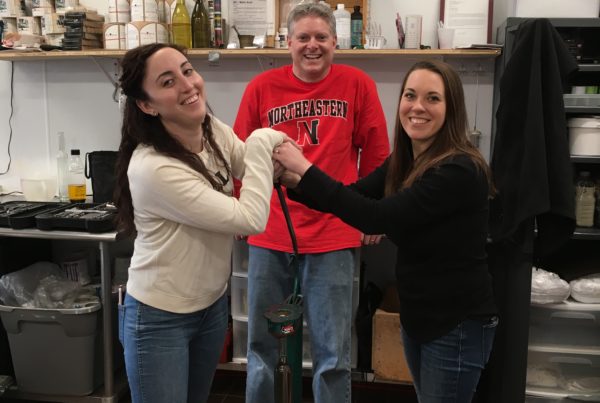 Since the pressing of our barrel club owners’ Chilean Cabernet Sauvignon on May 12th, we have racked (pumped the wine) off the gross lees (major sediment after pressing) and again off the fine lees. The gross lees are really a combination of skins, some seeds, and even some dead yeast cells, where the fine lees are generally the dead yeast cells from a completed fermentation. The wine was inoculated with a malolactic bacterial culture that will convert the malic acid (harsh, astringent) into lactic acid (smooth, creamy) to round off the acids over time and give it a nice smooth texture. Now all that is left is an unfiltered, young wine that is ready for long-term aging.
Since the pressing of our barrel club owners’ Chilean Cabernet Sauvignon on May 12th, we have racked (pumped the wine) off the gross lees (major sediment after pressing) and again off the fine lees. The gross lees are really a combination of skins, some seeds, and even some dead yeast cells, where the fine lees are generally the dead yeast cells from a completed fermentation. The wine was inoculated with a malolactic bacterial culture that will convert the malic acid (harsh, astringent) into lactic acid (smooth, creamy) to round off the acids over time and give it a nice smooth texture. Now all that is left is an unfiltered, young wine that is ready for long-term aging.
On July 28th, we racked the owners’ wine from our 2000 liter stainless steel fermentation tank into new American oak barrels. The barrels themselves are from Kelvin Cooperage which has been making high-quality wine and whiskey barrels since 1963. This barrel is a 24-month air-dried, Bordeaux export, 225 liter, medium toast. In other words, it has quality wood, craftsmanship, size, shape, smell, and taste. The medium toast will add a nice smokey complexity to the wine over time.
From here the wine will sit and age. About every other month, we will open the barrel to sample and top it off. We will document both the lab and sensory analysis of the wine and make sure that it continues to head down the right path. We’ll also ask the wine owner to come in and taste it with us to see how it is progressing. Topping off the wine with more surplus Cabernet Sauvignon is important. As the wine ages, it will dehydrate inside the barrel, creating some headspace that can contain oxygen. So, we’ll add some wine to fill it right to the bung. Over time, the wine will become heavier bodied and more complex as it interacts with its environment.
At this point the wine is only a few months old, but already has some very good promise. It is still a little bitter from the malic acid and is flat in terms of its complexity. It has some obvious cab peppery notes, with still some grapey flavors that will develop over time. We are excited to see where this goes over the next 9 months in the barrel. Stay tuned!




